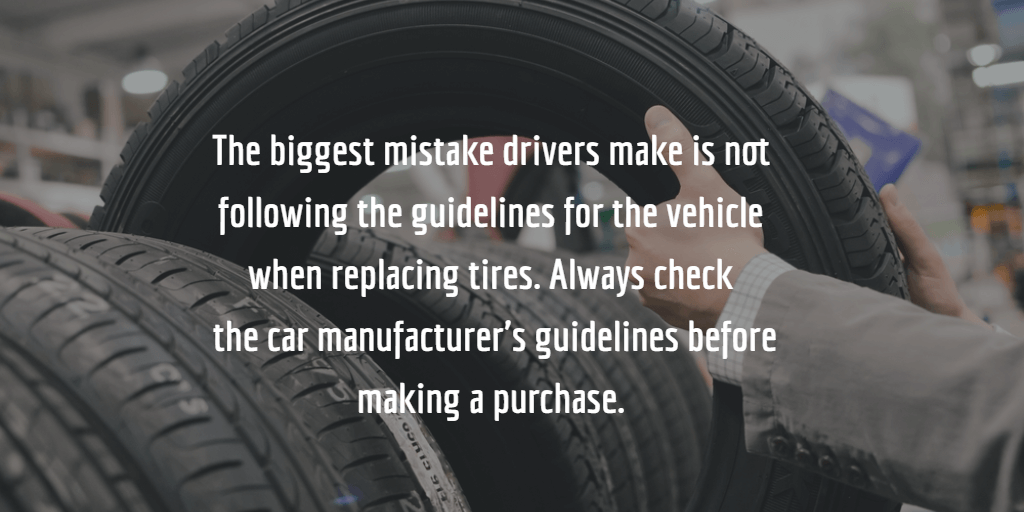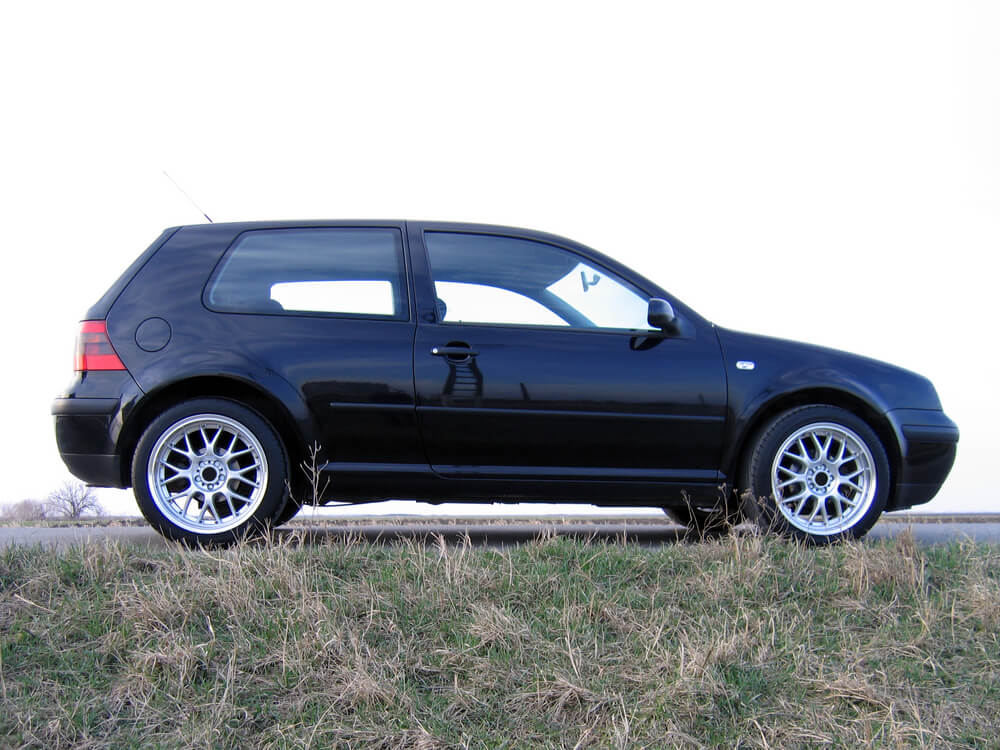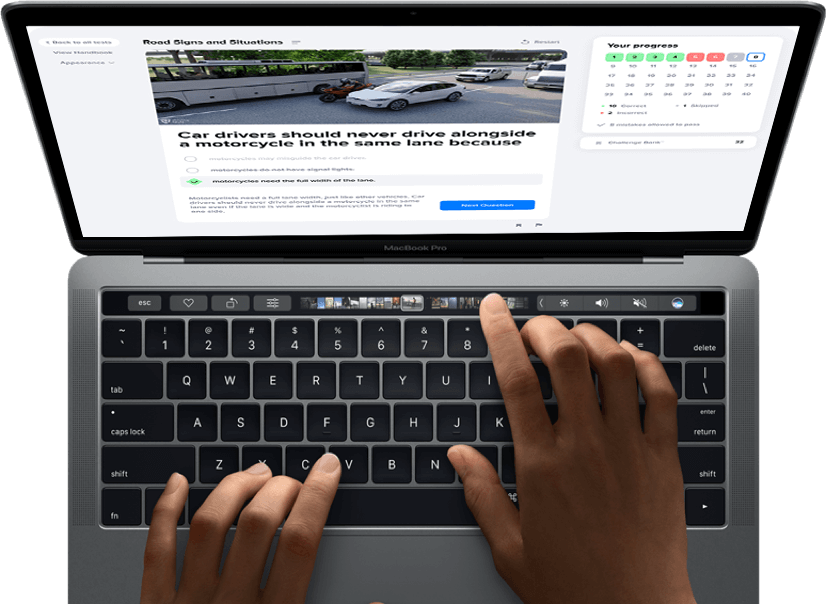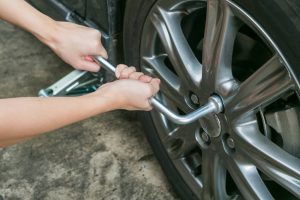The tires that you drive on can make a difference in how much you save on gas. Buying the “right” tires for your car will help you be more efficient on the road. You want to choose a tire that is going to last a long time and feel comfortable while you are driving. Shelling out five hundred or more dollars for something that you don’t necessarily see, wear, enjoy, or desire is not what most people would describe as an enjoyable shopping experience. Buying tires is a weighty financial responsibility for most drivers. Many drivers put little thought into the type of tires they purchase for their vehicle other than price; however, tires are an important part of your overall driving safety and the style of your car. The type of tires that are best for you and your vehicle depends largely on the type of driver you are.
You’re reading one of our “Beginner Driver’s Guide” articles. Need to practice for your upcoming exam? Take our free sample driving test -- no registration required! ✨
5 Tips for Choosing Tires
- 1
Choosing Tires if You Commute
Are you a commuter? You will want a set of tires that has been predicted to last a long time and increase your fuel efficiency. There are many brands and types of tires that are designed particularly for people who drive small cars on daily commutes to work and school. Buying these types of tires will help your car handle more smoothly on the highway. Tires that are designed to last a long time are the ones that are usually called “aggressive” tires. These tires will give you more grip and you will feel more comfortable while driving. Aggressive tires are made of special materials which are more resistant to wear and tear than other types of tires. These tires are designed to last a long time without changing, and they are the tires that you want to use on the road.
The ratings are molded into the outer sidewall of tires and include temperature, traction, and tread wear grades![choosing tires]()
- 2
How to Choose Tires for Larger Vehicles
Do you drive a large truck or SUV? These types of vehicles often require larger, and more expensive, tires. While a smaller style may be more economical, the look of your vehicle will be less sporty and rugged. In these heavier vehicles, it is important to follow the manufacturer’s specifications when determining the proper tire size to purchase. There are specific types of tires that are designed to improve the gas efficiency of trucks and SUVs if you are concerned about your fuel budget. If you own a truck or SUV, you may want to consider the following points when choosing your next set of tires.
1. Larger Tires Have a Greater Rolling Radius
One of the most important features of larger tires is their increased diameter. On average, the diameter of tires for trucks and SUVs is 30% greater than standard passenger tires. What is the significance of this 30% increase? You will have a greater rolling radius. A large tire with a greater diameter has a larger surface area, which means that the tire will take a longer distance to come to a complete stop.2. Soft to the Road
Always keep a firm grip on the steering wheel when you drive with larger tires. This is because larger tires tend to be soft to the road, which means that they don’t offer as much cushioning as small tires. As a result, larger vehicles feel harder to the driver and passengers. You should also check your vehicle’s alignment regularly, as larger tires will cause your alignment to drift. When your alignment is off, your vehicle will vibrate more, especially when you make turns.3. Increased Gas Consumption
When you drive on larger tires, your car will use more gas. This is because the larger tires have a larger diameter, which means that more energy is required to complete a rotation and move forward. This will result in lower gas mileage. If you must drive with larger tires, be sure to maintain regular service intervals to ensure that all components are working properly. It may also be helpful to drive more slowly, as this will lessen the effect that the larger diameter tires have on your gas mileage.4. Maintain Proper Pressure
These larger tires will need to be inflated at a higher pressure. It’s recommended that larger tires should be inflated to the manufacturer’s recommended pressure levels. If you’re not sure what the manufacturer recommends, you should read the sidewall of your tire. This information will be listed on the sidewall. You should never inflate your tires below the recommended pressure levels. - 3
Choosing Tires for Off-Roaders
Do you drive your vehicle off-road? If so, you might be interested in purchasing a set of dual-purpose tires. These types of tires are appropriate for both off-road travel and driving on regular roads. These types of tires are larger and have more prominent treads. They will help your vehicle navigate mud, steep inclines, and loose gravel. Dual-purpose tires are also suitable for driving on wet and snowy roads. Obviously, you are going to have to pay a bit more for these types of tires. However, you will have peace of mind knowing that you have the ability to travel off-road. On the other hand, if you only drive your vehicle on city streets, you may opt for a type of tire that is more appropriate for this type of driving.
With all terrain tires you can have the traction you need in wet, mud and snow conditions without sacrificing performance![all terrain tires]()
- 4
Custom Tire Options
Is your vehicle customized? Paint jobs, chrome details, tinted windows, and custom exhausts are often accentuated by a particular style of tires. Many drivers of customized vehicles often choose low-profile tires. If you drive an antique or classic car, you may want to choose a set of tires that is historically appropriate.
When it comes to customizing your vehicle, you need to choose the type of tire that can be effective for your style. Off-road tires are highly effective for heavy-duty work, while performance tires are meant for speed. If you are looking to make a statement with your tires, there are several styles to choose from. If you are looking for something traditional, you may want to go with whitewalls. These tires are often paired with classic cars. If you are looking for something that is meant to be seen, you may want to go with a set of chrome rims that come with white lettering. Most drivers are looking to make a statement when they choose their tires. By choosing a style of tires that fits your personality, you will never get bored with your vehicle’s appearance. When it comes to tire options, the sky is the limit!Constructed with a wider tread, low-profile tires grip the road better and afford you more stability while taking a turn![low profile tires]()
- 5
How to Choose Tires for Severe Weather Regions
Many drivers in states such as Colorado, Utah, and Minnesota (to name a few) live in severe winter territory. While the majority of the country is experiencing the warm and sunny days of summer, these states have snow on the ground and are preparing for another harsh winter season. If you are a driver in one of these areas, you need to make sure that your tires are equipped to handle the changing seasons. You may need to invest in tires that are specially engineered to help you stay safe in ice, snow, and slush. These tires are known as severe weather tires, 4×4 tires, all-terrain tires, or M+S tires. These tires are designed with extra tread to grip the road in tough, winter weather conditions. Severe weather tires can be identified by the M+S or All-Terrain rating on the sidewall. The M+S rating means that the tire is fit for mud and snow, while All-Terrain tires will have up to 4 peaks on the mountain icon, which represents mud, snow, sand, and rocky terrain. Because severe weather tires are designed with extra tread, they can make your vehicle very difficult to drive in the summer. These tires are not recommended for use in warmer climates, since they are built to be used in snowy and icy conditions. Severe weather tires are also known to offer better handling in snowy weather. If you live in a severe weather region, make sure that your tires are M+S rated. If you have a vehicle that rides on all-terrain tires, you may want to consider switching to a more severe weather tire for the winter season. All-terrain tires are built for dry, hard surfaces, so they are not a good choice for winter driving. Whether you live in Colorado, Utah, or Minnesota, make sure that your tires are equipped to handle severe weather conditions. Severe weather tires are known for superior traction in snow and ice, so they are an excellent choice for these regions. If you have not yet tried a set of M+S rated tires, you may want to consider a switch.
Replace your tires before they become too worn to be safely driven on. A good rule of thumb is to place a penny inside the tread with Lincoln’s head perpendicular to the ground. If you can see all of his hair, it is time for replacements. The following video will help you visualize it.
Call around to several garages or tire retailers before making your purchase. Individuals who purchase a set of four tires are often eligible for a rebate or incentive from the tire manufacturer. Some garages also offer to rotate and balance your tires for free after you purchase them there.








